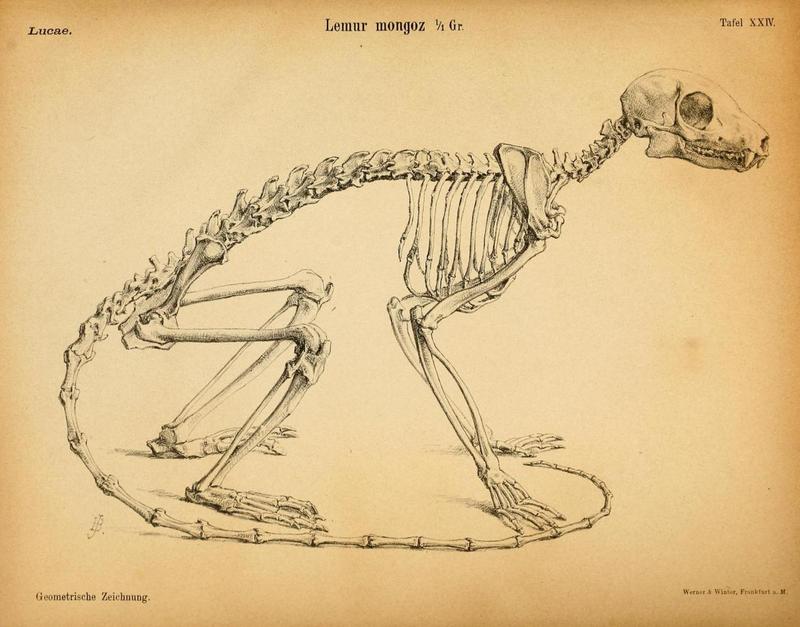|
Mongoose Lemur (Eulemur mongoz)
| 제목: | Mongoose Lemur (Eulemur mongoz)
| | 올린이: | Wiki Photos (---@---.---)
| |

| 해상도: 1280x1003
파일크기: 159405 Bytes
등록시간: 2019:10:30 23:10:06
|
Description Deutsch: Skelett eines Lemuren von Johann Christian Gustav Lucae, aus: Die Statik und Mechanik der Quadrupeden. Dr. Johann Christian Gustav Lucae, 1883.
Date 1883
Source http://biomedicalephemera.tumblr.com/post/8667999255/lemur-skeleton-die-statik-und-mechanik-der
Author Johann Christian Gustav Lucae
Source: https://commons.wikimedia.org/wiki/File:Lemus_skeleton_Lucae_1883.jpg
The mongoose lemur (Eulemur mongoz) is a small primate in the family Lemuridae, native to Madagascar and the Comoros Islands. These arboreal animals have pointed faces, long, bushy tails, dark-brown upper parts, pale bellies, and beards, which are reddish in males and white in females. Mongoose lemurs live in family groups and feed primarily on fruit, but also eat leaves, flowers, and nectar, with nectar from the kapok tree making up a large part of their diet during the dry season.
Order: Primates
Suborder: Strepsirrhini
Family: Lemuridae
Species: Eulemur mongoz |
^o^
동물그림창고 똑똑전화 누리집
^o^
|
|